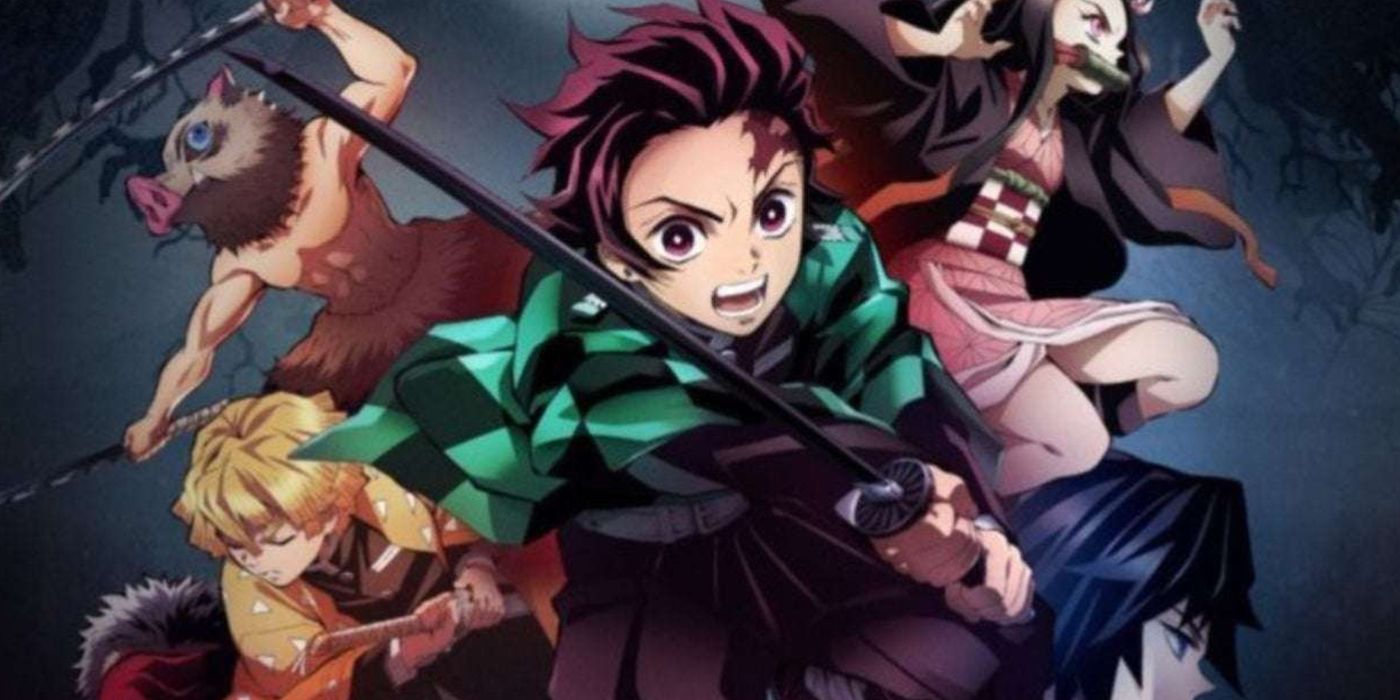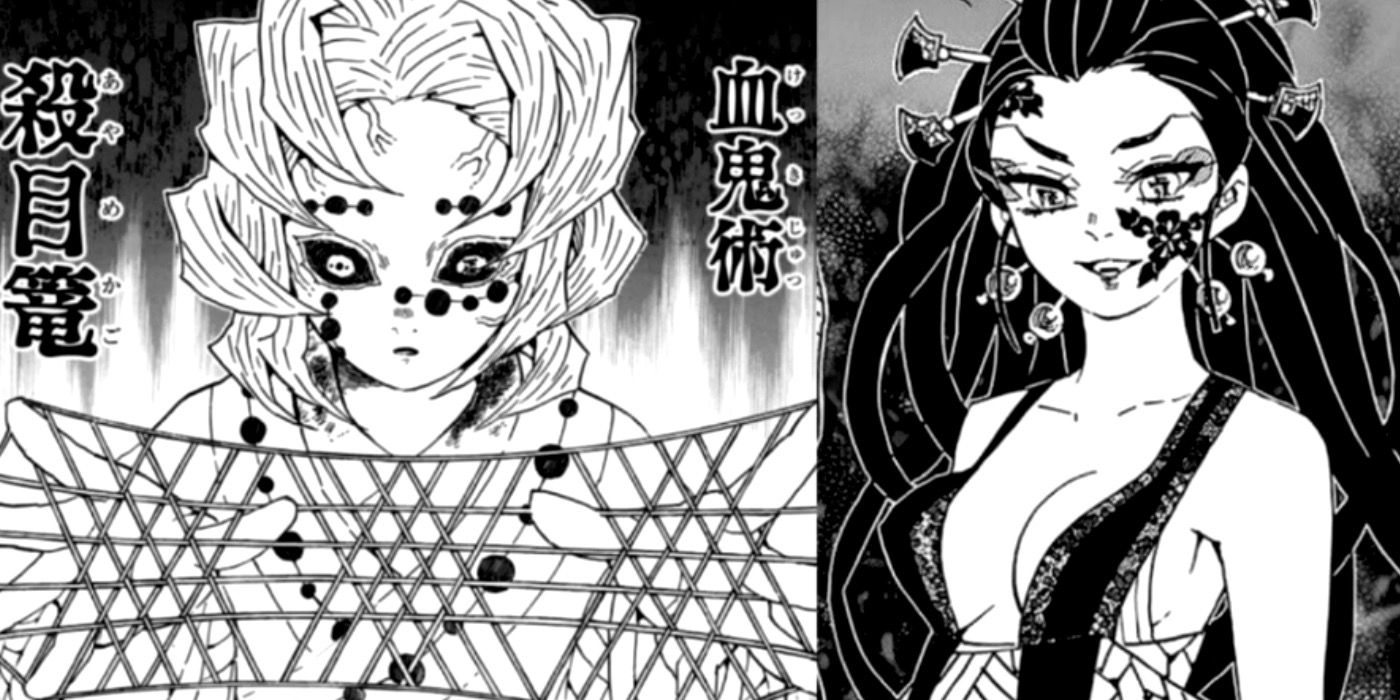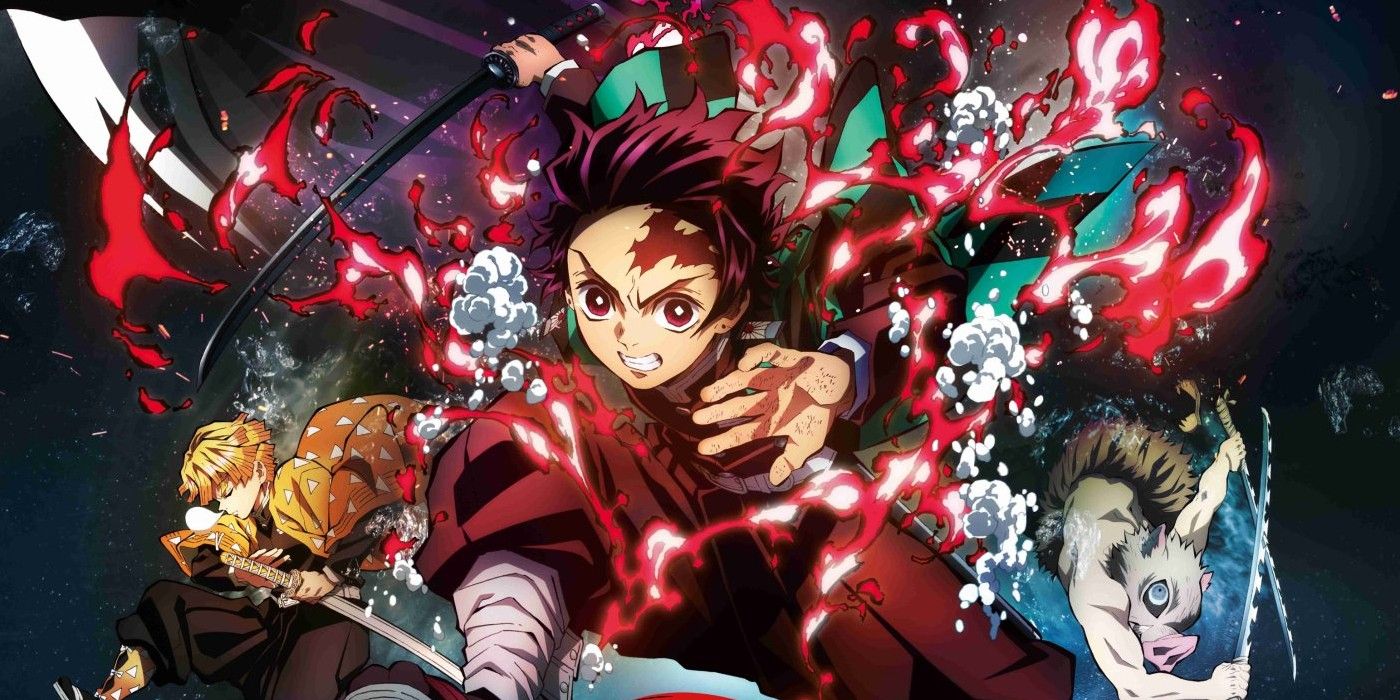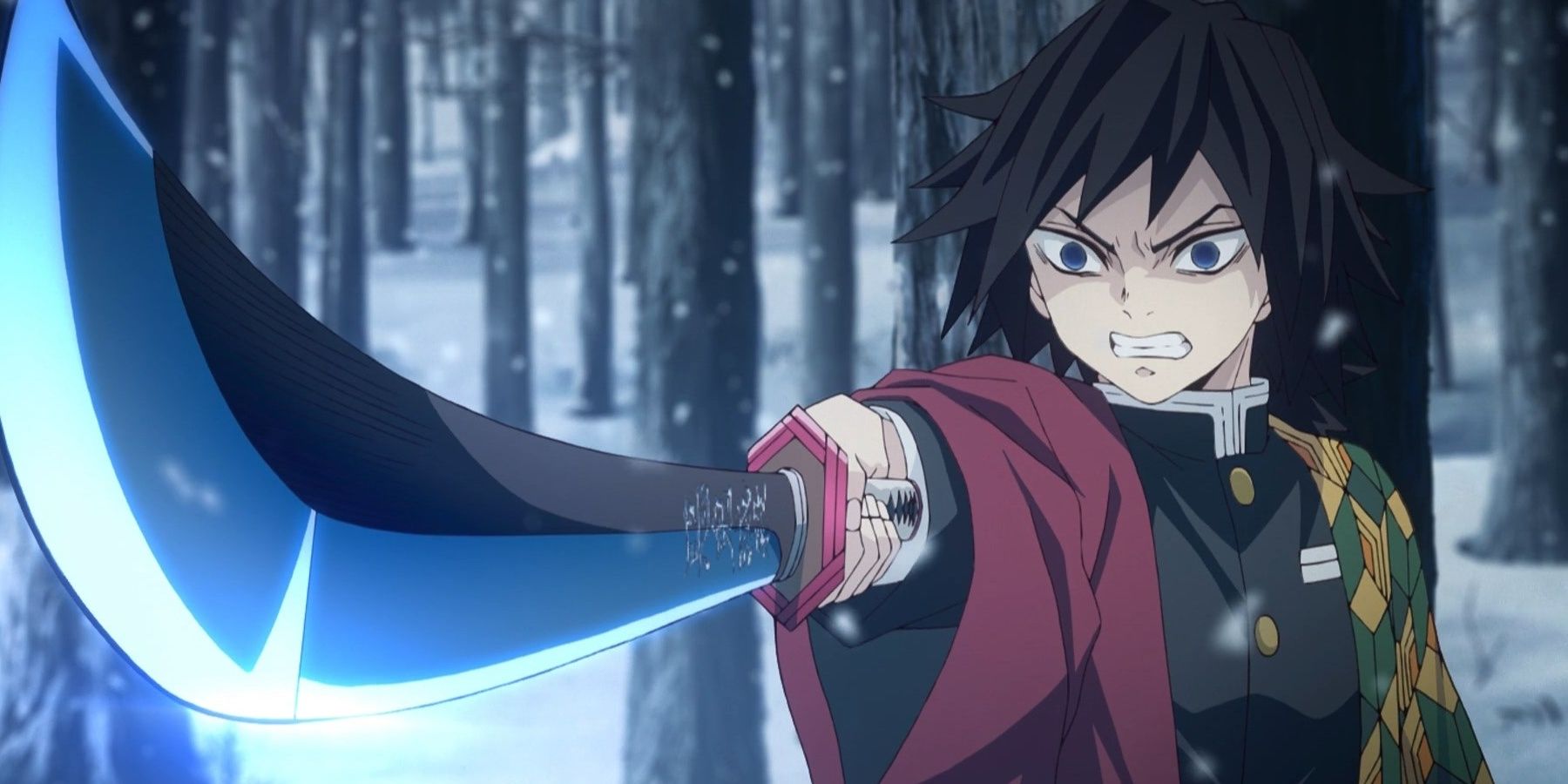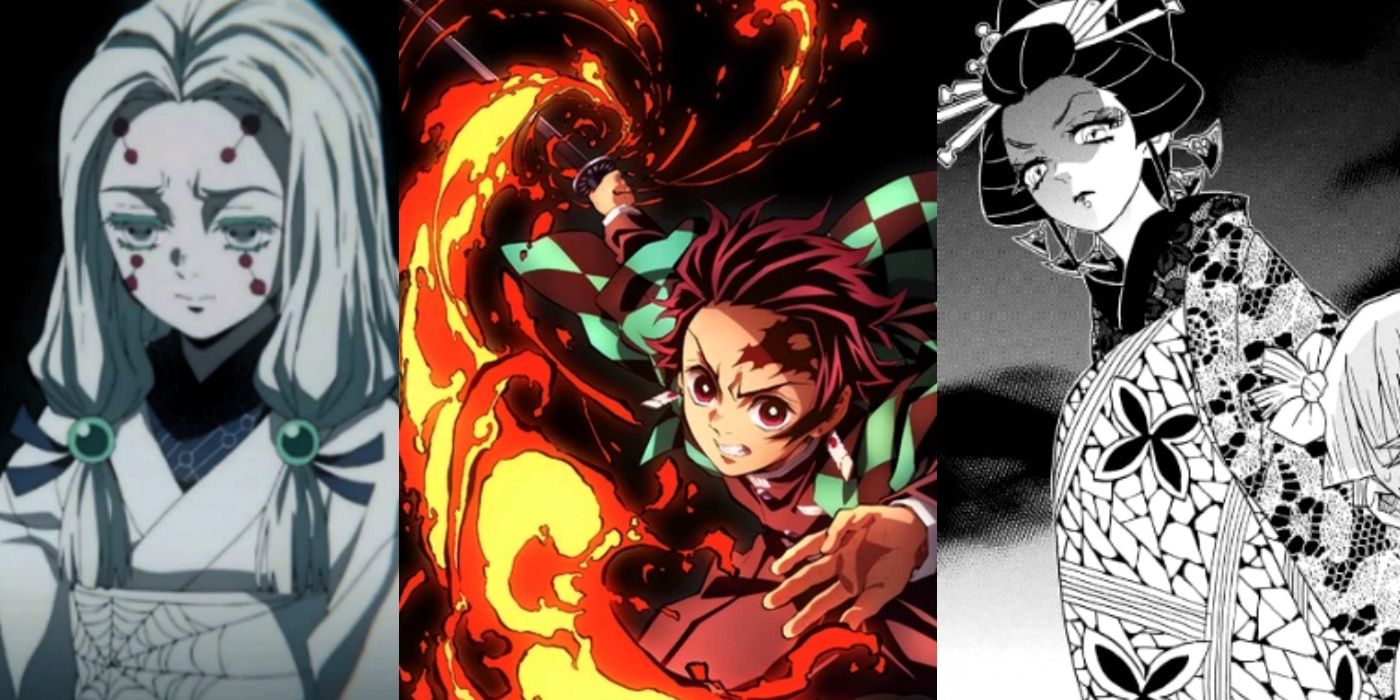The Demons of Demon Slayer are as well known as their manga's heroes. Proving to be frightful foes, deadly villains, and the cause of the entire plot, it's safe to say Koyoharu Gotōge's story just wouldn't be the same without her brilliant Demon creations and world-building. With their real-world inspirations, unique details, and deep-dive trivia, here is everything you need to know about the Demons of Demon Slayer.
Readers are introduced to the dark world of demons in Kimetsu no Yaiba Vol. 1 #1, when protagonist, Tanjiro Kamado, returns home from the market only to find that his family has been slain by a demon; his sister, Nezuko, is the only one left alive, though she's been transformed into a demon herself. Tanjiro then embarks on a journey to become a Demon Slayer, after being recruited by Demon Corps member, Giyu Tomioka. Readers quickly learn the deadly nature of Demons and their rich lore. Only certain steel can kill them, sunlight is deadly, and they feed on human flesh. But there's so much more detail to the Demons than these simple facts.
What Makes a Demon, a Demon?
Unlike traditional demonic figures and folklore, the monsters of Demon Slayer aren't necessarily 'natural'. That is, Demons in this world aren't just 'born' as such. Crafted from a scientific concoction of Blue Spider Lily properties, Demons are the result of attempted medicine gone horribly wrong. This revelation is discovered in Kimestu No Yaiba Vol. 15 #127, where it's shown that the Blue Spider Lily offers eternal life, but at an awful cost if not administered correctly. Over time, the original Demon and recipient of the medicine - Muzan Kibutsuji - discovers they can infect humans with their blood, effectively transforming them into demons. This leads to a gradual creation of a Demon 'race'. In other words, Demon Slayer Demons are more similar to vampires, though only the most powerful Demons host the power to transform humans.
Demons display a wide range of shared characteristics, the most basic including large, cat-like eyes, a non-human appearance, immortality, quick healing factors, and super strength. These aspects all appear in various degrees of power, according to the strength or rank level of the Demon in question. And just as their abilities vary, so do their morals. Not every Demon is inherently evil or drawn toward violence, such as the Demon Tamayo. Kimetsu no Yaiba Vol. 2 #15 reveals that Tamayo doesn't like killing humans. To avoid conflict, she simply buys human blood and spends her time researching Demon and Human medicines, even discovering the 'cure' for the Demon transformation.
Demon Details
The Demons all possess an ability known as The Blood Demon Arts. Since their transformation in biological, consuming more and more biological matter - or human cells -allows each Demon to create their own specialized powers. With each consumption, a Demon grows more powerful and their special abilities increase as well. Some Demons, therefore, are much stronger than others. A great example of this is seen in Kimetsu no Yaiba Vol. 20 #175, where the Demon Kokushibo--who used to be a Demon Slayer in his human life--can summon a sword as an extension of himself. With numerous eyes both on his body and his sword, Kokushibo can see all in battle. All Demons share the traits of enhanced strength, speed, senses, and swift healing, and immortality. So, if a Demon hosts all these power boosts, how exactly do Demon Slayers slay them?
What Can Kill a Demon?
There are a few methods with which one can kill a Demon. Due to their weakness the sun, the Demon Corps fighters develop steel forged and exposed to sunlight - the Nichirin Blade, discussed in Kimestu no Yaiba Vol. 2 #9. The steel is crafted from two elements, "Scarlet Crimson Ore" and "Scarlet Crimson Iron Sand." Powerful and sharp enough to cut Demon flesh, these are the swords the Demon Corps and Hashira use to behead their enemies; cutting a Demon hardly ever kills it, but removing the head guarantees their death.
A fighter can try to keep a Demon alive until morning as a means of burning it to death, but it's a risky move if the Demon is strong. This is often viewed as a cruel killing method. Some Demon Corps members remain sympathetic to Demons, knowing they were once human but host the potential to become human again. But others, such as Insect Hashira's Shinobu Kocho, share no such sympathy with Demons who show no sign of regaining their humanity. Shinobu Kocho develops poisons from the Wisteria Flower as her method of attack. Demons are adverse to the smell of the flower, and its noxious properties prove deadly to them. Therefore, Nichirin blades laced with Wisteria poison are yet another means for Demon slaying. Shinobu also teams up with the reformed Demon, Tamayo, to develop an infused Wisteria poison, effectively making Shinobu's human blood deadly to Demons.
The Real World Japanese Influence on the Lore
Part of Demon Slayer's appeal is its stunning visual aesthetic, particularly, in its character design and real-world influences. Set in an alternate reality of Japan where biology and nature are enhanced into mythical-like forces, there are several instances of Japanese myth, folklore, and history found in the Demon Slayer universe. In the manga, the Demons are referred to with the Japanese Kanji "O-ni", meaning 'spirit'. Japanese "Yokai" serves as an umbrella term for a variety of supernatural beings, a subset of which are the "Oni". These "Oni" are typically depicted with horns, sharp teeth, and oddly colored skin such as blue, white, or red. Both "Oni" and "Yokai" serve as an explanation for the unexplainable in Japanese folklore; seems like the perfect inspiration for the Demon Slayer Demons. They can trick humans by appearing humanoid or grotesque. Some can shape-shift at the master level, and some just look like classic ghosts. Some serve evil while others simply exist and can't change their nature, and a few fight to function as benevolent forces. Just as art and literature showcase clear depictions of "Oni" and "Yokai", so too does Demon Slayer visually show the differences between the human and Demon characters.
The bright fashion each character sports is heavily influenced by its parallel time slot to Japan's Taisho period (1912-1926). Tanjiro Kamado's checkered haori is a perfect example of Taisho fashion, as are several other vividly patterned kimonos and haoris featured on various characters. The villain and Demon supreme, Muzan, sports both traditional Japanese attire and a Western Wardrobe, with an instantly recognizable fedora. Some Demons, having lived centuries, often sport clothing even older than the Taisho period, with some notable Demons possibly appearing to be from the Edo era (1603-1868) and other Medieval Japanese eras. These cool details highlight how Demon Slayer takes inspiration from the real world, and almost acts as a historical fantasy narrative itself, serving as an alternate explanation for the "Yokai" and "Oni" tales.

